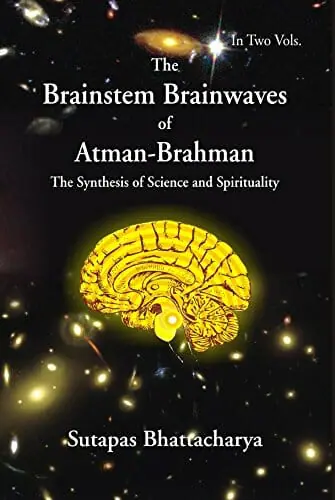In his 1943 essay “Religion and Time” (in Vedanta and the West), Aldous Huxley wrote that the Humanistic pseudo-religions (Nationalism, Fascism, Communism) resemble the apocalyptic perversions of true religion. Apocalypticism leads to preoccupation with an extraordinary cosmic event which will occur in the future and this guarantees the apocalypticist against the possibility of a timeless realization of the eternal Reality. Religious believers in a temporal God seek temporal values associated with the ‘psychical’ rather than the spiritual. They make use of petitionary prayer for concrete, material benefits and seek to enter an everlasting (not Eternal or Atemporal) heaven [19]. In “Some Reflections on Time” (1946), Huxley wrote that Death is only transcended when Time is transcended, as Time destroys all that it creates. In all traditional philosophies and religions Time (the Temporal) is the enemy, the deceiver. But under the influence of evolutionary theories, Western philosophers of recent generations had raised Time, imagining it to be the creator of the highest values, so that even God is emergent {emphasis mine}. Bergson claimed that ‘duration’ (temporality) was the primary, ultimate reality. Hegel and Marx imagined History with a capital ‘H’ as a temporal providence leading to the Kingdom of Heaven on Earth. Such views assume that the Divine, History, Geist or Cosmic Process is concerned with humanity in the collective and not with humanity at any given moment. However, all the evidence points to the fact that it is the individual soul which alone can contact the Divine {emphasis mine} [20].

In the introduction to The Presence of Light: Divine Radiance and Religious Experience, [21] the editor Matthew Kapstein (a scholar of Buddhism at Chicago) refers to Light being a near-universal factor in mystical experiences and to the fascinating role of Light as a bridge between the physical and spiritual realms. In mysticism East and West, says Kapstein, not only is the Light ubiquitous, but there exist strikingly precise similarities between traditions. Light cannot be dismissed as a culturally constructed concept limited only to one culture and thus inadmissible as a common element of all mysticism. At the beginning of the book, Kapstein presents a quote stating that God is Light. However, Kapstein and most of the Western religious studies and art historian contributors to this book are heavily influenced by the prevailing Constructivist dogma of contemporary Comparative Religion. Constructivism stands opposed to the Perennial Philosophy or Universalist view (advocated by Forman et al. in The Innate Capacity) that, beneath the superficial diversity, there is a deep, common core Mysticism based on the Pure Consciousness experience, reflecting universal human transformations of Consciousness. Constructivism asserts that all mystical experiences are hallucinatory, arising as a consequence of the mystic’s indoctrination and prior expectations.
Even the Light is often treated by naïve Constructivist academics as being merely a metaphor! Even some non-Constructivist scholars who try to link Buddhist meditation to Cognitive Science make this error. In the recent The Cambridge Handbook of Consciousness there is one chapter on non-Western knowledge entitled “Asian Perspectives: Indian Theories of Mind,” focusing mainly on Buddhist Abhidhamma, written by Buddhologist Georges Dreyfus and Buddhophile Philosopher-of-Mind, Evan Thompson (who is also a co-editor of the book). These authors state that, in the Indian philosophical system called Sankhya, the non-material self is described metaphorically as a light as it passively illuminates objects [22]. The dualist Sankhya philosophy, is commonly associated with Patanjali’s Yoga Sutras although Sankhya actually appeared 600 years after Patanjali [23]. The Self (Purusa) in the Sankhya/Yoga tradition is quite clearly equivalent to the Vedantic Atman and contemporary yogis in the Yoga Sutra tradition quite clearly refer literally to experiencing the flow of the Light underlying gross cognitions as a phenomenological fact [24]. The Inner Light is not a metaphor.
One must question the motivation of such academics given, for instance, that Thompson’s mentor Francisco Varela co-wrote a book with the Dalai Lama in which the Dalai Lama spoke quite literally of the Clear Light! The underlying assumption seems to be that the phenomenological assertions of non-Europeans are not trustworthy even though Dreyfus and Thompson say that Cognitive Science should utilise such Buddhist phenomenological knowledge. Varela ignored the Dalai Lama’s views in his so-called ‘Neurophenomenology,’ relying exclusively on the phenomenology of Edmund Husserl. Even then, Varela ignored Husserl’s distinction between the Flow of the Absolute- (or Time-) Consciousness and the ego-consciousness to try to make Husserl’s facts fit his Emergent Materialist assumptions [25, 26]. As we shall see in Chapter 8, Husserl’s flow of the Absolute- (or the Time-) Consciousness is in fact the flow of the Inner Light but not experienced as such as Husserl remained limited to studying predominantly object perception in the Waking state. Thus the Pure Light remained ‘clouded-over’ for him.

In his concluding chapter to The Presence of Light, Kapstein shies away from the glaring conclusion of an underlying, Universal Core Mysticism of the Light or Pure Consciousness, common to spiritual traditions (known as the Perennialist or Perennial Philosophy view) even though it stares him in the face. Instead, he reassures readers, assumed to be fellow Constructivist believers, that he will not “pull the perennialist rabbit out of the hat” [27]. Such ‘selective blindness’ to the obvious facts is not confined to the orthodoxy in Western Comparative Religion but is found in numerous academic disciplines which pretend to produce ‘value free’ knowledge. In regard to the brazen suppression of facts contradicting their theories by the orthodox Astrophysics establishment, Halton Arp tells us that the educated see theory not facts {emphasis mine} [28].
The Constructivist argument is a simplistic, unscientific and downright false argument based largely on the absurd premise that the naive assertions of, the European, Immanuel Kant are infallible truths and must be taken on authority. The corollary of this is that, for millennia, Eastern philosophers must either have been fabricating claims or else mistaking mere hallucinations as real and are thus not to be taken seriously. This is, in spite of the fact that reports of Eastern yogic experiences and Eastern philosophical ideas are nonetheless included in the comparisons. This reveals a tacit patronizing attitude on the part of mainstream Western academia toward non-Western thought. This attitude is most apparent in works such as Culture and Modernity: East West Philosophic Perspectives [29]. In this Hawaii Conference proceedings book, aiming supposedly to bring about greater understanding between Eastern and Western philosophies, the first chapter (pride of place) was given to American Eliminative Materialist Richard Rorty [30]. Rorty dismissed the claims of mystics to supposedly ‘penetrate the veil of appearances’ (i.e. perceive the transcendent Reality beyond phenomena) by citing the totally discredited pseudo-scientific Kabbalism of Sigmund Freud’s ‘psychoanalysis’ and Skinnerian Behaviorism, which reduced human mentality to mere stimulus-response behaviour based solely on Pleasure and Pain. No real attempt was made by the editor to refute Rorty’s view. Thus, the Conference proceedings opened with a self-deluding Westerner claiming to dismiss the very mystical basis of most Eastern Philosophy as self-delusion or fraud using pseudo-scientific mythologies which he thought were scientific! We shall see in Chapter 9 that Freud’s Psychoanalysis was based on fraudulent claims to having cured patients and supposedly scientific studies. It has no scientific basis whatsoever.
Kant was unremittingly hostile to the claims of mystics to have experienced the Divine in this life and his (speculative) ideas preclude the possibility of any such Divine or mystical insights [31]! Kant’s famous epistemological distinction between things as they are apprehended by us (phenomena) in perception and things as they truly are in themselves (noumena) assumes that the latter (noumenal reality) can never be apprehended. We have seen that Kant revealed very little about his so-called ‘Transcendental Method’ upon which he based his claims and yet, there has been remarkably little actual debate about Kant’s method [32], even though Kant’s conclusions are widely held to be undisputed facts in mainstream Western philosophy. We have also seen that Kenneth Westphal argues in his Kant’s Transcendental Proof of Realism that Kant’s method of ‘thought experiments’ to (supposedly) ascertain the prerequisites of sensory perception fails to support Kant’s Idealism but actually support Realism [33]. We have also seen that Cognitive Science has rendered epistemological Realism untenable. Whether or not Westphal is correct does not concern us.

The contributors to the Blackwell Guide to Hegel’s Phenomenology of Spirit (2009) [34], edited by the same Kenneth Westphal, are either ignorant of or suppress the mystical background to this work in spite of its suggestive title, reducing all explanations to socio-political projections. I suspected that there was more to it and, sure enough, discovered Glenn Magee’s Hegel and the Hermetic Tradition (2001) [35] which reveals the Hermetic and Christian-Kabbalist occult roots of Hegel’s absurd superstitions which so intrigue the naive, spiritually-ignorant Marxians. Once again, Western academics are caught out revising historical facts to suit modern Materialist cultural expectations. Many of the facts undermining the superstitions of Freudian ‘Psychoanalysis’, which supporters pretend is ‘scientific’, are debunked in Chapter 9. Psychoanalysis was also derived largely from Kabbalism [36].
Wilhelm and Rawlinson stated that Kant’s doctrine is essentially that of the Upanishads, that the phenomenal world is illusory (Maya) [37]. However, there is a crucial difference: transcending our perceptual and cognitive constructions in suprasensory perception (i.e. ‘penetrating the veil of appearances’) and eventually reaching Reality as it is in itself is precisely what yogic mysticism claims to attain. I showed in Chapter 1 how my Brain Deactivation/Retreat-to-the-Brainstem interpretation of enlightenment, grounded on my identification of the physical correlate of the Inner Light, finally kills off the Kantian superstition that there is no Third Mode of Knowledge which reveals metaphysical truths. We saw in Chapter 2 that my direct correlation of the Inner Light with the activating brainwaves from the brainstem reticular formation also undermines the ignorant and dogmatic Constructivist claim that there can be no unconditioned mental processes.
This Constructivist denial of mystical transcendence is just one example of Western pretensions to universality. This is the false belief that mainstream, modern Western rationalist thought applies to all human activities and that all such human activities can be reduced to ‘scientific’ Western understanding. The facile Eurocentric appeal to Kant’s naive belief, that mystical realizations cannot be true, has been misused by self-serving academic apologists for the exclusivity and uniqueness of Semitic monotheisms such as Catholicism (e.g. R.C. Zaehner [38, 39]) and Judaism (e.g. Stephen Katz [40]) in an attempt to counter the perceived threat of a true Universal Spirituality underlying the diverse religious mythologies superimposed by various cultural traditions. As indicated in the previous chapter Judaism, unlike Hinduism, Buddhism, Christianity and Islam, is not based on the Inner Light. Nonetheless, the vengeful, bloodthirsty, tribal deity Yahweh is based on the same human brain structures underlying the tribal, war-gods found in other cultures.
NOTE:
This is Part I of Chapter 3 of “THE BRAINSTEM BRAINWAVES OF ATMAN-BRAHMAN. The Synthesis of Science and Spirituality” (In Two Volumes) (Volume 1), written by Sutapas Bhattacharya.
Title of Original Chapter: “The True ‘Light of Truth’: The Link between Spiritual and Material Realms”

IMAGES: pixabay.com
References
19. Huxley, Aldous (1943) “Religion and Time”. Reprinted in Jacqueline H. Bridgeman (Editor) (1992). Huxley and God: Essays, Harper Collins.
20. Huxley, Aldous (1946) “Some Reflections on Time”. Reprinted in Jacqueline H. Bridgeman (Editor) (1992). Huxley and God: Essays, Harper Collins.
21. Kapstein, Matthew T. “The Divine Presence of Light”. In Matthew T. Kapstein (Editor) (2004) The Presence of Light: Divine Radiance and Religious Experience, University of Chicago Press.
22. Drefus, George and Thompson, Evan “”Asian Perspectives: Indian Theories of Mind”. In Philip D. Zelazo, Morris Moscovitch and Evan Thompson (Editors) (2007) The Cambridge Handbook of Consciousness, Cambridge University Press.
23. Whiteman, J.H. Michael (1993) Aphorisms on Spiritual Method: the “Yoga Sutras of Patanjali” in the light of mystical experience, Colin Smythe.
24. Brown, Daniel P. “The Stages of Meditation in Cross-Cultural Perspective”. In Ken Wilber, Jack Engler & Daniel P. Brown (Editors) (1986) Transformations of Consciousness: Conventional and Contemplative Perspectives on Development, Shambhala Publications.
25. Varela, Francisco J. “Present-Time Consciousness”. In Francisco J. Varela and Jonathan Shear (Editors) (1999) The View from Within: First-person approaches to the study of consciousness, Imprint Academic.
26. Varela, Francisco J. “The Specious Present: A Neurophenomenology of Time Consciousness”. In Jean Petitot, Francisco J. Varela, Bernard Pachoud and Jean-Michel Roy (Editors) (1999) Naturalizing Phenomenology: Issues in Contemporary Phenomenology and Cognitive Science, Stanford University Press.
27. Kapstein, Matthew T. “Rethinking Religious Experience: Seeing the Light in the History of Religions”. In Matthew T. Kapstein (Editor) (2004) The Presence of Light: Divine Radiance and Religious Experience, University of Chicago Press.
28. Arp, Halton (1998) Seeing Red: Redshifts, Cosmology and Academic Science, Apeiron.
29. Deutsch, Elliot (Editor) (1991) Culture and Modernity: East-West Philosophic Perspectives, University of Hawaii Press.
30. Rorty, Richard L. “Philosophers, Novelists and Intercultural Comparisons: Heidegger, Kundera and Dickens.” In Elliot Deutsch (Editor) (1991) Culture and Modernity: East-West Philosophic Perspectives, University of Hawaii Press.
31. Perovich Jr, Anthony, N. “Does the Philosophy of Mysticism Rest on a Mistake?”. In The Problem of Pure Consciousness: Mysticism and Philosophy (1990) edited by Robert K.C. Forman, Oxford University Press.
32. Westphal, Kenneth R. (2004) Kant’s Transcendental Proof of Realism, Cambridge University Press.
33. Westphal, Kenneth R. (2004) ibid.
34. Westphal, Kenneth R. (Editor) (2009) The Blackwell Guide to Hegel’s Phenomenology of Spirit, Wiley-Blackwell.
35. Magee, Glen A. (2001) Hegel and the Hermetic Tradition, Cornell University Press.
36. Bakan, David (1958) Sigmund Freud and the Jewish Mystical Tradition, D. Van Nostrand Company.
37. Wilhelm, Friedrich and Rawlinson, H. G. “India and the Modern West.” In A Cultural History of India (1975) edited by A. L. Basham, Clarendon Press (Oxford University Press).
38. King, Richard (1999) Orientalism and Religion: Postcolonial Theory, India and ‘The Mystic East’, Routledge.
39. Smith, Huston (2000) Cleansing the Doors of Perception: The Religious Significance of Entheogenic Plants and Chemicals, Tarcher Putnam.
40. Forman, Robert K. C. (1999) Mysticism, Mind, Consciousness, State University of New York Press.
External Resources
The Impact of Enlightenment in Europe
The Enlightenment
Anecdotes of Enlightenment
